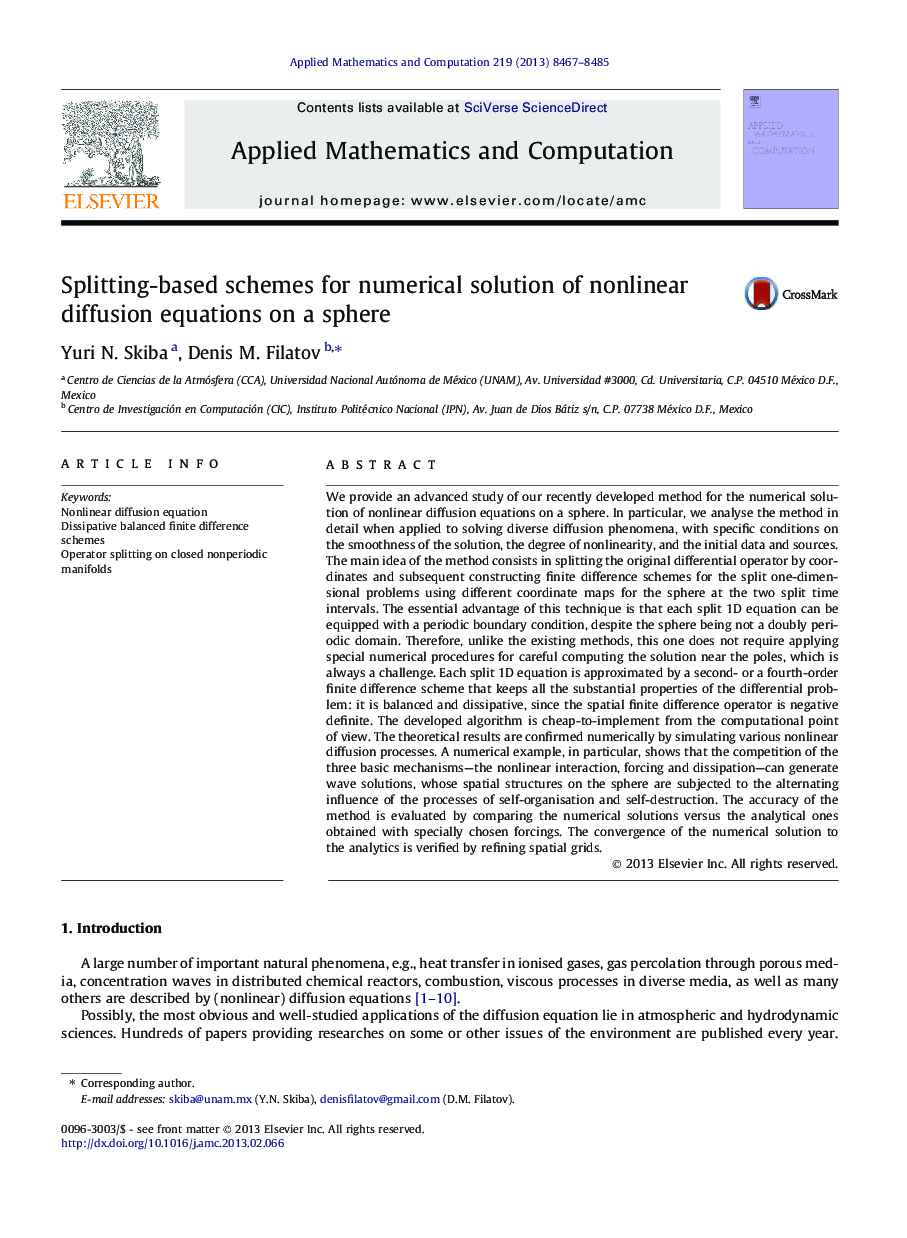| Article ID | Journal | Published Year | Pages | File Type |
|---|---|---|---|---|
| 4628913 | Applied Mathematics and Computation | 2013 | 19 Pages |
Abstract
We provide an advanced study of our recently developed method for the numerical solution of nonlinear diffusion equations on a sphere. In particular, we analyse the method in detail when applied to solving diverse diffusion phenomena, with specific conditions on the smoothness of the solution, the degree of nonlinearity, and the initial data and sources. The main idea of the method consists in splitting the original differential operator by coordinates and subsequent constructing finite difference schemes for the split one-dimensional problems using different coordinate maps for the sphere at the two split time intervals. The essential advantage of this technique is that each split 1D equation can be equipped with a periodic boundary condition, despite the sphere being not a doubly periodic domain. Therefore, unlike the existing methods, this one does not require applying special numerical procedures for careful computing the solution near the poles, which is always a challenge. Each split 1D equation is approximated by a second- or a fourth-order finite difference scheme that keeps all the substantial properties of the differential problem: it is balanced and dissipative, since the spatial finite difference operator is negative definite. The developed algorithm is cheap-to-implement from the computational point of view. The theoretical results are confirmed numerically by simulating various nonlinear diffusion processes. A numerical example, in particular, shows that the competition of the three basic mechanisms-the nonlinear interaction, forcing and dissipation-can generate wave solutions, whose spatial structures on the sphere are subjected to the alternating influence of the processes of self-organisation and self-destruction. The accuracy of the method is evaluated by comparing the numerical solutions versus the analytical ones obtained with specially chosen forcings. The convergence of the numerical solution to the analytics is verified by refining spatial grids.
Keywords
Related Topics
Physical Sciences and Engineering
Mathematics
Applied Mathematics
Authors
Yuri N. Skiba, Denis M. Filatov,
